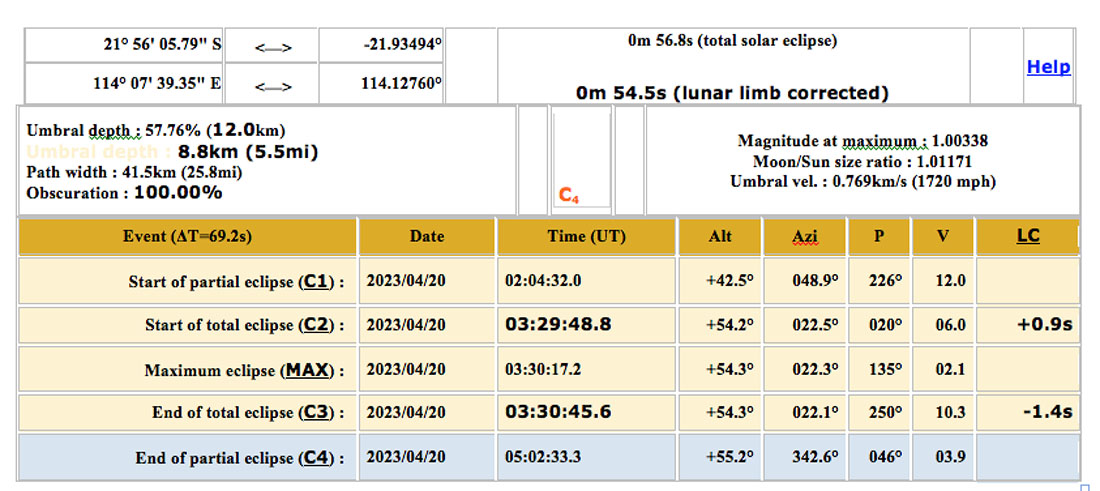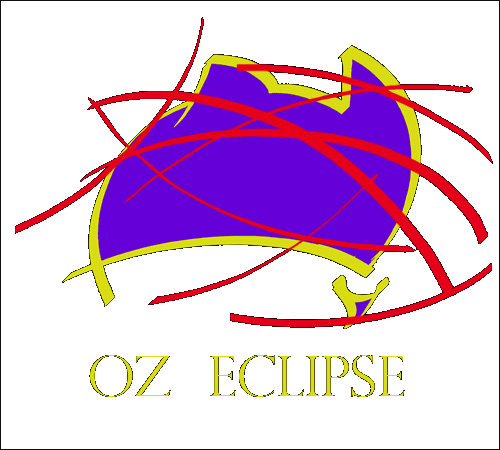 |
WAITING FOR
THE SHADOW
Total Solar
Eclipse Exmouth 2023 - Joseph Cali
|
| PHOTOGRAPHY | ECLIPSES |
ASTRONOMY |
HOME PAGE |
|



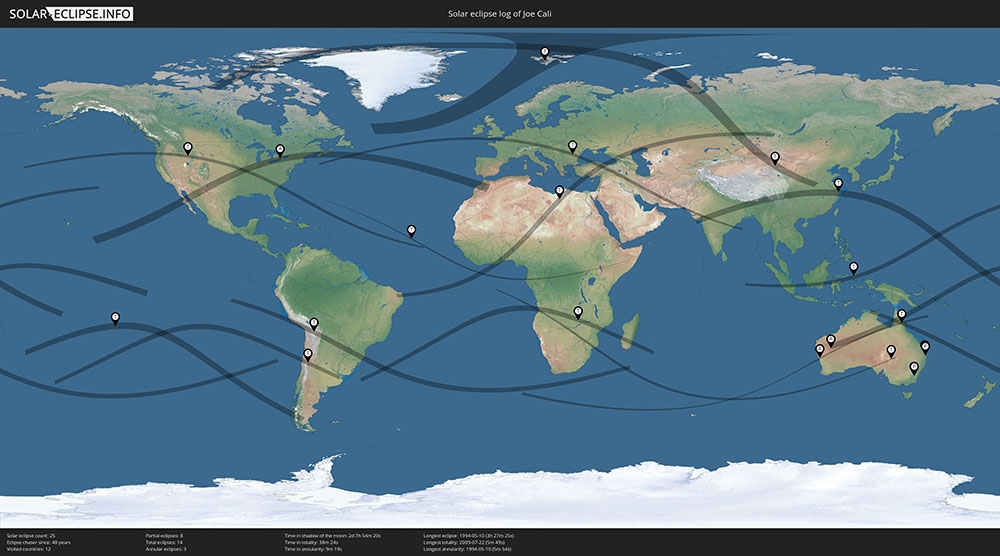 Above Left: The eclipse path over the Cape Range National Park Above Right: Paths of the 14 total, 3 annular and some partial eclipses I have observed prior to the Exmouth eclipse, pins showing my observing locations at each event. |
| I left my home in the eastern
states just after lunch on April 3rd. I won't go into too
many details here. Eight days & 5250km of driving plus 4 rest/sightseeing days later I arrived in Exmouth on Saturday 15th April. On the map below, the blue numbers are the daily distances, the red numbers are the date of the night-time stopover. In Australia, animals such as kangaroos, wallabies and emus can wipe out your car. Kangaroos and wallabies are mostly nocturnal so, I made a decision to keep the daily drive where possible to a relatively modest distances, average 500km per day and in daylight. |
 |
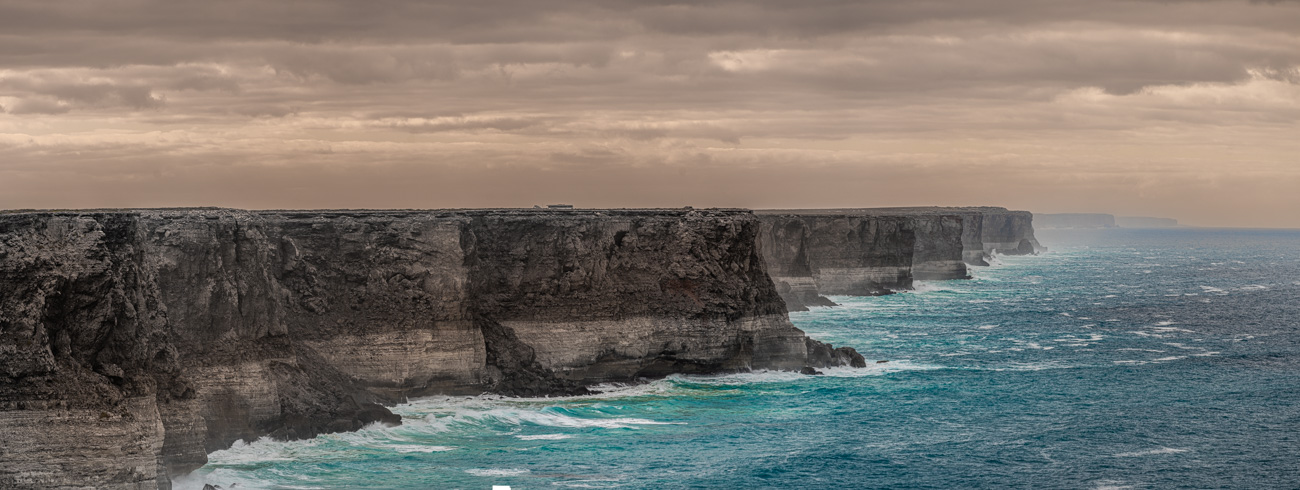
 Coral Bay
|
 View from the Vlamingh Head Lighthouse |
 Jurabi Turtle Nesting Beach Ningaloo |
 Jurabi Turtle Nesting Beach Ningaloo |
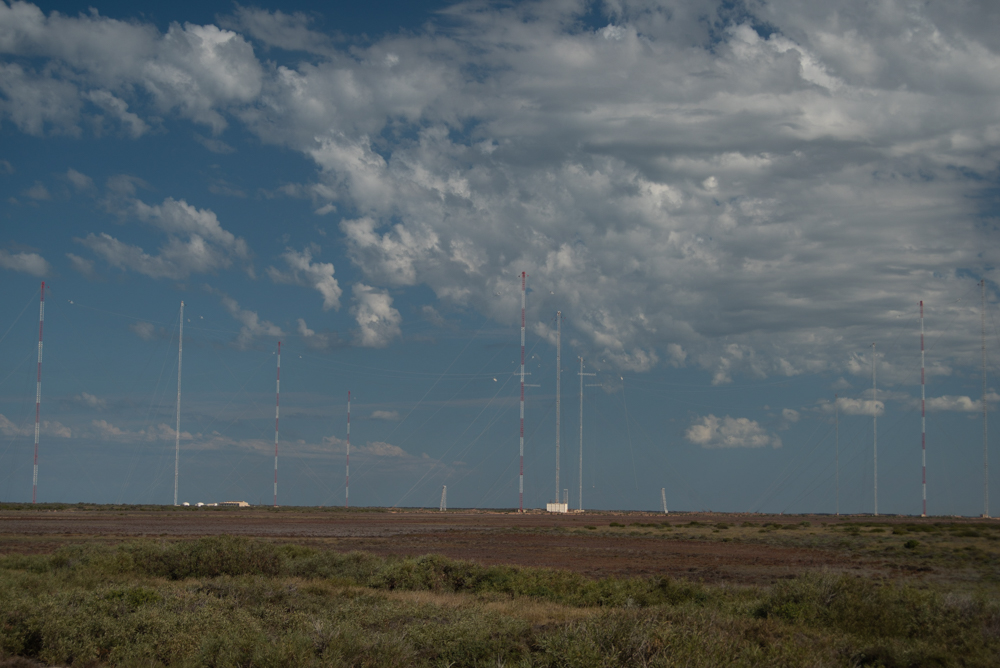 Submarine Communication Long Wave Radio Station |
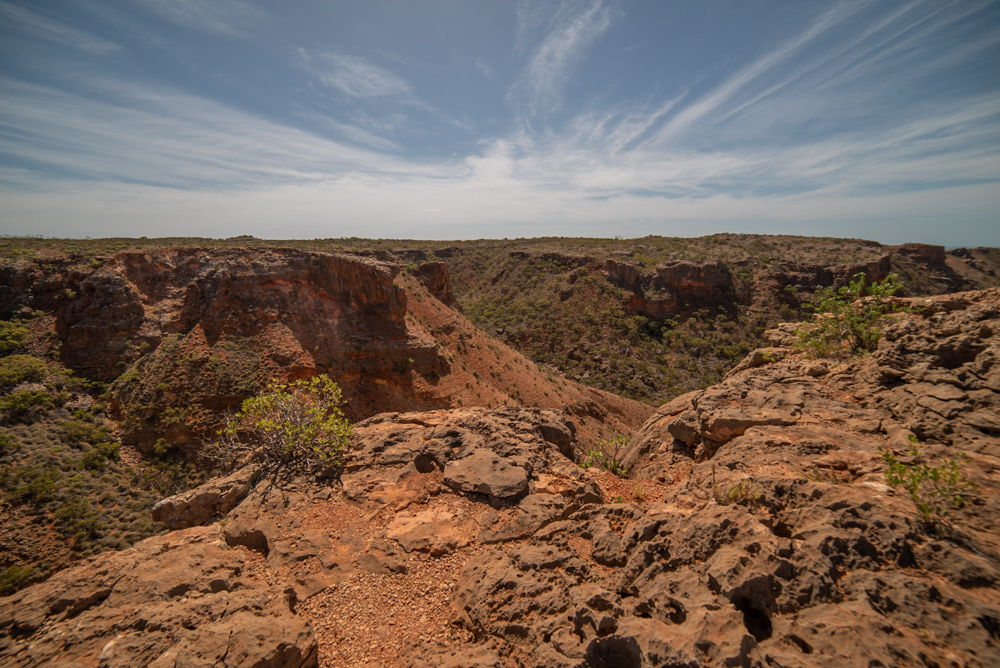 Charles Knife Canyon |


In the photo above taken early eclipse morning, the 475B tripod on the left belongs to Phil Jones and is supporting his SkyWatcher Star Adventurer. No camera or lens yet. In the middle, my iOptron iEQ45 with both refractors already mounted. On the right, the Losmandy Starlapse is setup and awaiting Colin’s camera and lens. All three mounts were aligned the previous day. Later I set up two fixed tripods in the background. Jay and Benno Friendland also set up in the background. The trees casting shadows provided welcome shade in the morning while we were setting up. The Sun cleared the trees about an hour before first contact. |
| Pentax K5: ISO 100
Rokinon 135mm ED f2 @ f 2.8
Autobracket: 1/500 s - ½ s (equivalent) @ 2eV intervals |
Pentax K1: ISO100
ED80 refractor 480mm f6 Autobracket: 1/8000s - 1/4s @ 2ev intervals |
Pentax K-01: Movie mode 30 fps
-1 eV
Pentax 10-17mm f3.5 full frame fisheye Lens set to 10mm (180 deg diagonally) |
| Optic
ED80 refractor 0.8x reducer flattener 480mm f6 Pentax K1 |
Partial
phases ND5 f6 ISO 100 1/500 s |
2nd
Contact Diamond ring Baily’s Beads Prominences Inner corona chromosphere ƒ6 ISO 100 Program Mode: U1 x 2 1/8000 s 1/2000 s 1/500 s 1/125 s 1/30 s |
| Outer
Corona Program Mode: U2 x 2 1/1000 s 1/250 s 1/60 s 1/15 s ¼ s |
3rd Contact
Diamond ring
Baily’s Beads Prominences Inner corona chromosphere ƒ6 ISO 100 Program Mode: U1 x 2 1/8000 s 1/2000 s 1/500 s 1/125 s 1/30 s |
The only thing I
have to do while observing through the second telescope is to reach
across and flick from U1 to U2 then back to U1 which after years of
practice, I can do without even looking at the camera. |
|
Pentax K5
Tripod New filter + screw flange - Done USER MODE 1 Outer corona only 5 step x 2eV bracket 135 f2 ISO100 1/4 s f5.6 1/2 s f4 1 s f2.8 2 s f2 4 s f2 |
K01 475B Tripod Not required Timelapse /movie capture Totality ± 3 mins? 10mm full frame Fisheye (90o x 140o) from south east horizon through zenith to totality in the north east |

 Single exposure PDR Capture but no PDR post processing. |
 Single exposure: PDR Capture and processing applied. |
 PDR Capture and processing of each of 3 exposures. Three frames radially composited |

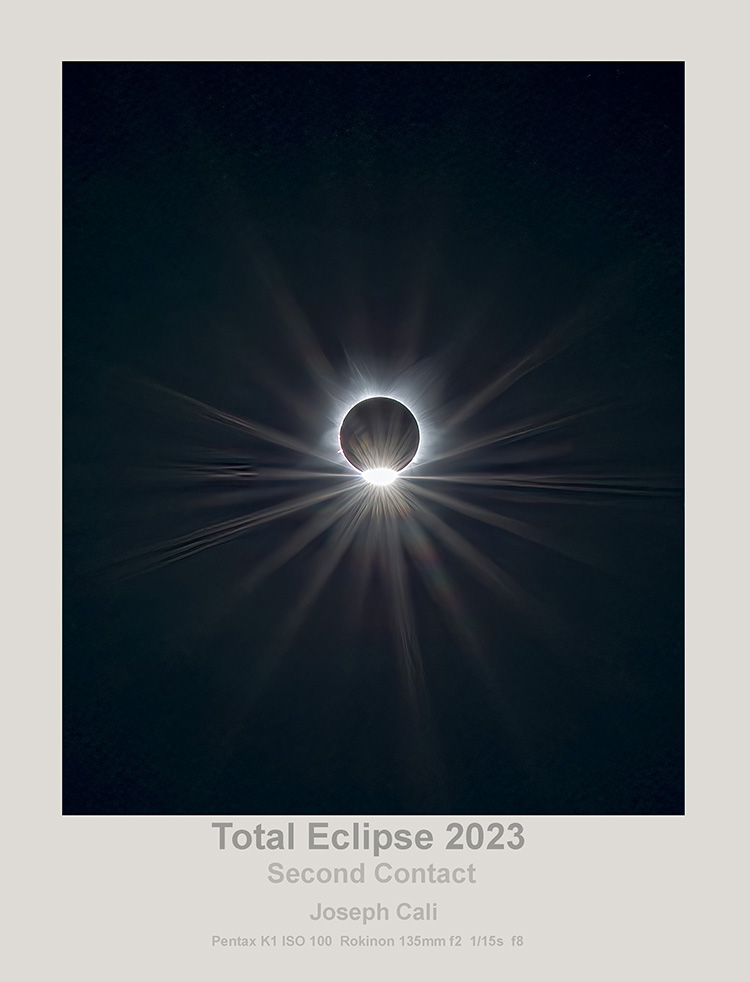 |
 |
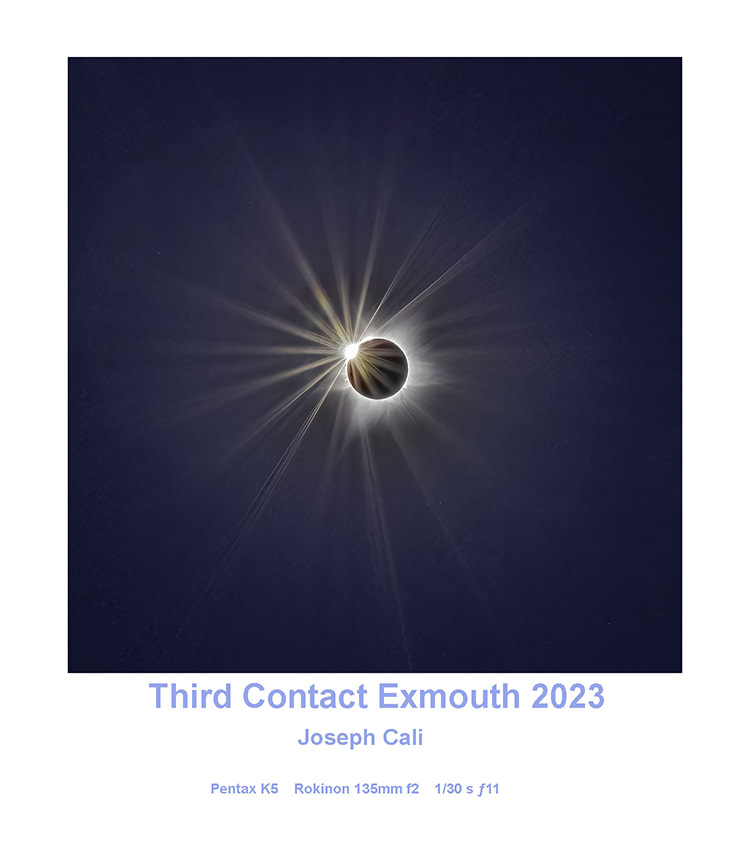 |
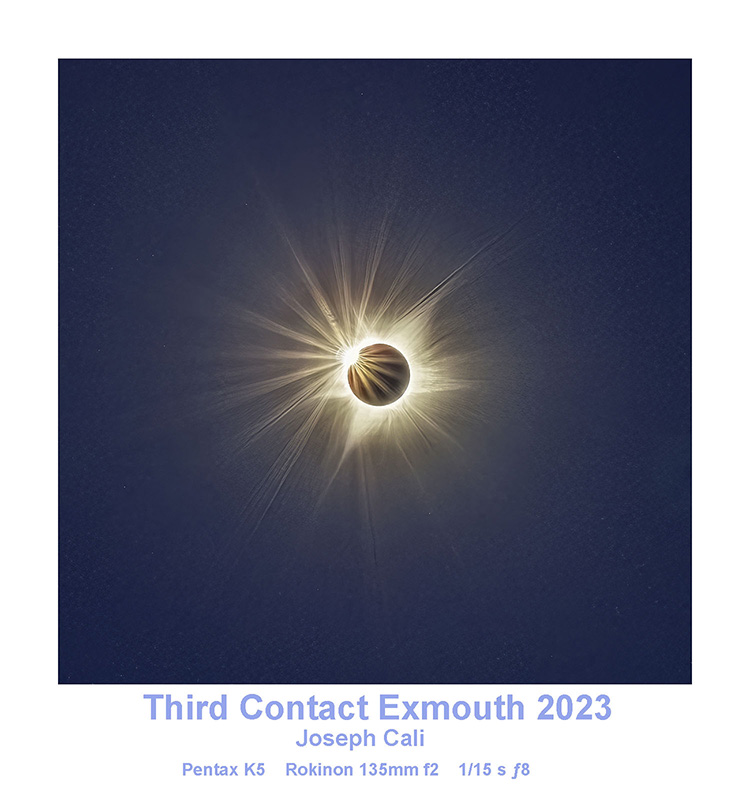 |

